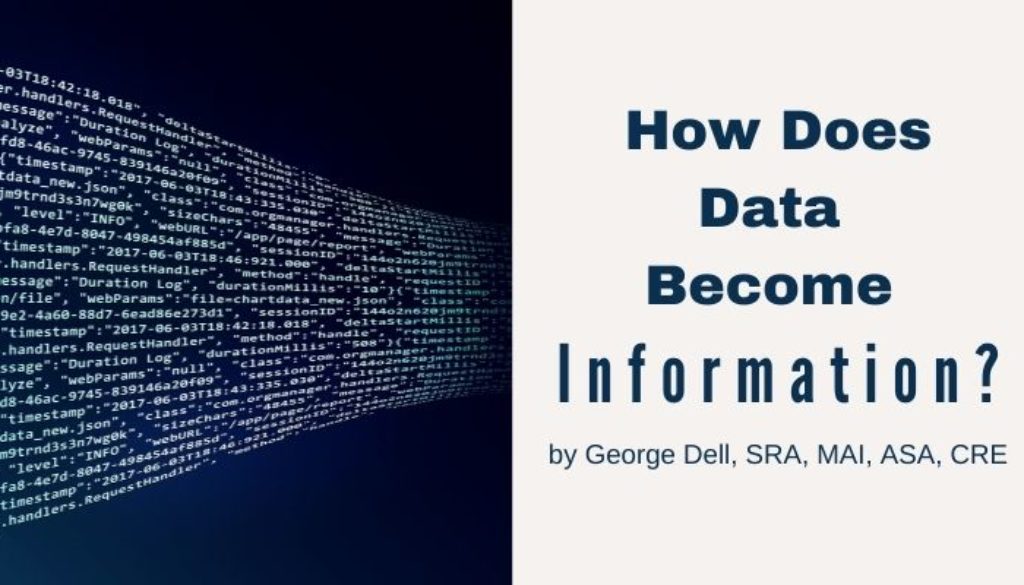We talk a lot about data. The Good. The Bad. The Biased. And how wonderfully important information is.
But what really matters? It can be easy to get lost in the mish-mash of talk about data.
Let’s step back. Why do we care about this?
We care because it is useful as an input to our economic system. A large part of that is data about real estate, about people, places, and things. But data is just data. It exists, but does not do anything. Nothing. It is only an input!
Knowing this, we must change our thinking. It is not “what does data do?” We change this to “what do we do to data to make it useful. We don’t care about data because it’s data. We care about data because it can help us understand things, evaluate things, and make better decisions.
Appraisers (and other, unregulated value estimators) gather, sort, and predict from data. But appraiser-valuers and other uncontrolled unlicensed valuers also must do two other things:
- Identify the question to be asked (the hypothesis)
- Design the solution path (the ‘scope of work’)
In the valuation context, data must have three things happen to it to get from a question to a solution.
- Someone must ask the right question, or design an algorithm which will substitute human judgment in individual cases.
- The appropriate data must be corralled, then categorized into ‘useful’ or ‘not useful’. This then becomes ‘information.’
- The information must be evolved into a prediction.
There is only one problem left.
Humans are not perfect. Algorithms are not perfect. Predictions are not exact.
If we assume the right question has been asked, along with the ‘reasonable’ and specific assumptions – then we can proceed to analyze the data. To turn data into useful results, requires two separate and quite different activities:
- The data must be sorted twice: first, a decision must be made about which data is irrelevant, which will likely never contribute to the ‘goodness’ of the result. In EBV (Evidence Based Valuation)© we call this initially corralled data the Assignment Data Frame (ADF)©. The ADF comprises all the data we believe we will ever need for this appraisal assignment. The download is simple. The decision is comfortably made by an experienced appraiser.
- Next, from that data set, there is a subset. It comprises the sales of properties which were able to be considered by a buyer on the date of value. (We recognize that in some cases of sparse data, additional indirectly competitive properties may need to be ‘added back.’)
- Finally, the appropriate model must be chosen by the appraiser (or AVM programmer) to have the computer run the related algorithm.
Data only becomes information through classification (useful or not), and prediction (forecasting to the date of value).
Interpretation requires a competent modeler (appraiser), and competent decision maker.
